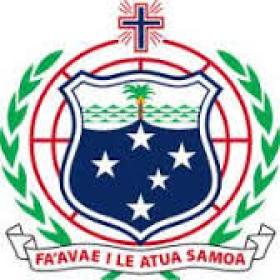Nuestra red internacional de asociados(as) abarca instituciones académicas, agregadores de datos, organismos gubernamentales, editoriales, asociaciones de agricultores(as), ONGs y otros agentes de la sociedad civil. Explore la gama de organizaciones utilizando el Land Portal que figura a continuación y únase a la red hoy mismo.
Government of Saint-Martin
This is the profile for the Government of Saint-Martin
Government of Samoa
New Zealand occupied the German protectorate of Western Samoa at the outbreak of World War I in 1914. It continued to administer the islands as a mandate and then as a trust territory until 1962, when the islands became the first Polynesian nation to reestablish independence in the 20th century. The country dropped the "Western" from its name in 1997.
Government of San Marino
This is the profile for the Government of San Marino
Government of Sao Tome and Principe
This is the profile for the Government of Sao Tome and Principe
Government of Saudi Arabia
This is the profile for the Government of Saudi Arabia
Government of Senegal
The French colonies of Senegal and French Sudan were merged in 1959 and granted independence in 1960 as the Mali Federation. The union broke up after only a few months. Senegal joined with The Gambia to form the nominal confederation of Senegambia in 1982. The envisaged integration of the two countries was never implemented, and the union was dissolved in 1989.
Government of Serbia
The Kingdom of Serbs, Croats, and Slovenes was formed in 1918; its name was changed to Yugoslavia in 1929. Communist Partisans resisted the Axis occupation and division of Yugoslavia from 1941 to 1945 and fought nationalist opponents and collaborators as well.
Government of Seychelles
This is the profile for the Government of Seychelles
Government of Sierra Leone
The British set up a trading post near present-day Freetown in the 17th century. Originally the trade involved timber and ivory, but later it expanded into slaves. Following the American Revolution, a colony was established in 1787 and Sierra Leone became a destination for resettling black loyalists who had originally been resettled in Nova Scotia.
Government of Slovakia
Slovakia's roots can be traced to the 9th century state of Great Moravia. Subsequently, the Slovaks became part of the Hungarian Kingdom, where they remained for the next 1,000 years.
Government of Slovenia
The Slovene lands were part of the Austro-Hungarian Empire until the latter's dissolution at the end of World War I. In 1918, the Slovenes joined the Serbs and Croats in forming a new multinational state, which was named Yugoslavia in 1929. After World War II, Slovenia became a republic of the renewed Yugoslavia, which though communist, distanced itself from Moscow's rule.









